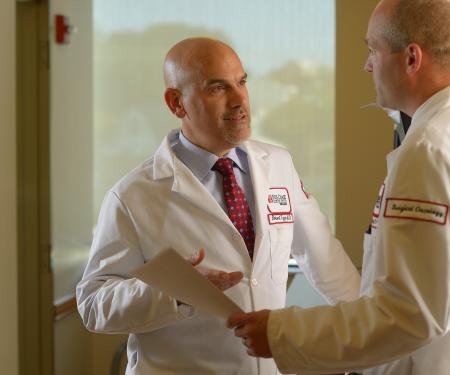In a transrectal prostate biopsy with use of Transrectal Ultrasound (TRUS), a diagnostic radiologist with expertise in prostate biopsies performs this outpatient procedure after local anesthesia has been administered. During the biopsy, a specialized ultrasound probe, called a transrectal ultrasound (TRUS), is placed in the rectum, which allows the radiologist to see the prostate. Often, the prostate cancer looks similar to normal tissue, so at least 10 samples are taken from the area of the gland where tumors are typically found. These samples are sent to pathology for accurate diagnosis. The procedure, which takes just a few minutes, typically results in some temporary discomfort.
Additional Information Generated
In addition to guiding the biopsy needles, TRUS is used to gather additional information about the prostate. TRUS uses sound waves to create a video image of the prostate gland. The probe releases sound waves, which create echoes as they enter the prostate. Prostate tumors sometimes create echoes that are different from normal prostate tissue. The echoes that bounce back are sent to a computer that translates the pattern of echoes into a picture of the prostate. TRUS alone cannot detect every tumor, but it has been shown to detect some tumors that cannot be felt by a DRE. TRUS can also estimate the size of the prostate gland, helping doctors get a better idea of PSA "density," which helps distinguish benign prostatic hyperplasia (BPH) from prostate cancer.
